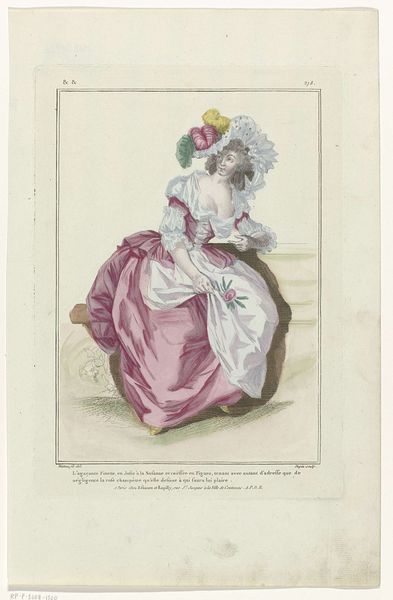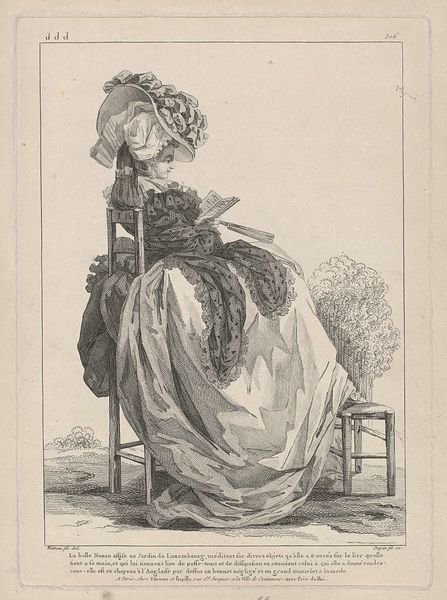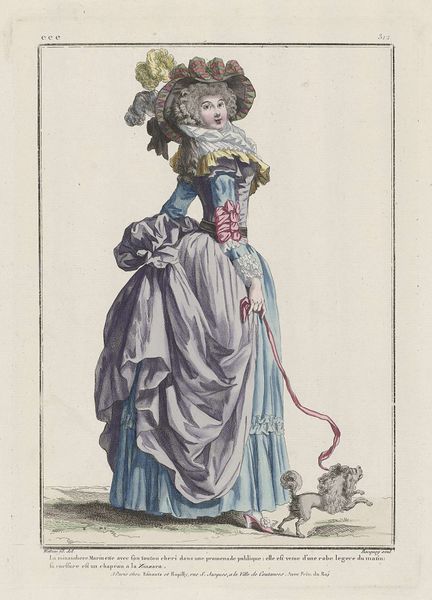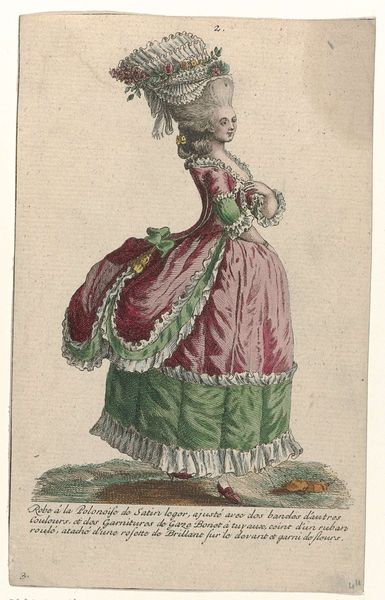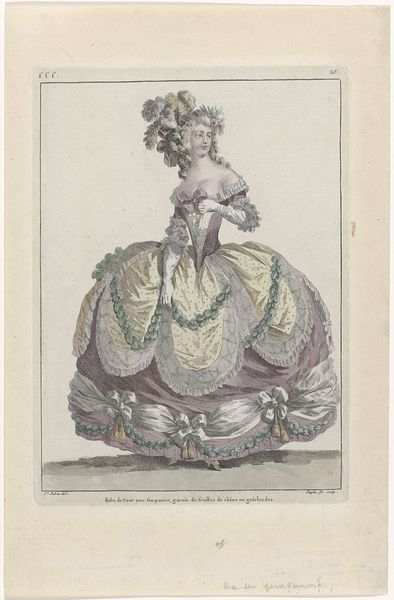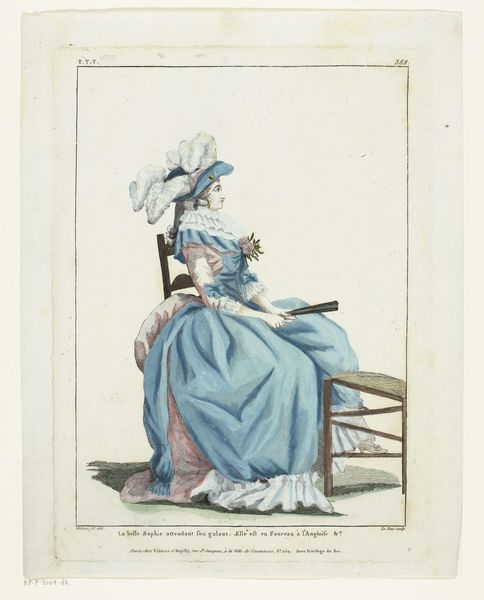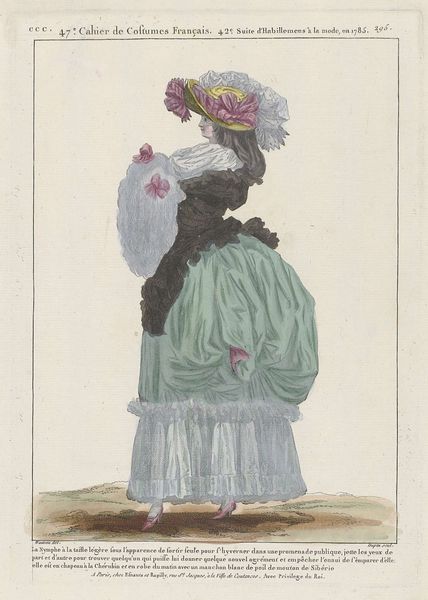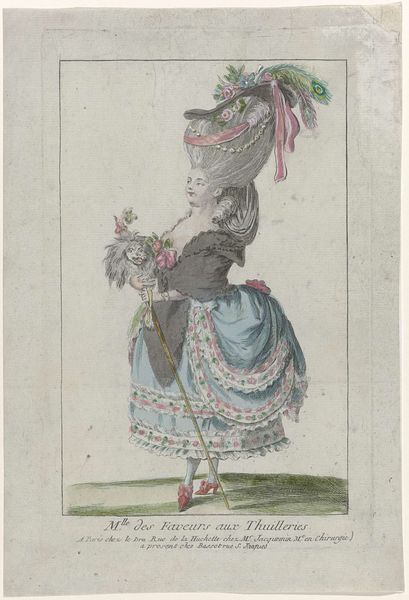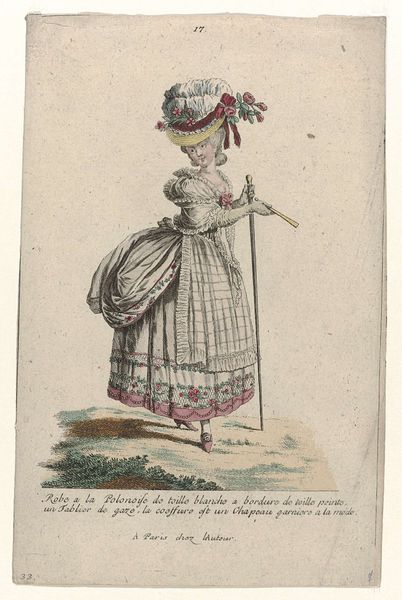
Gallerie des Modes et Costumes Français, 1785, ddd 304 : La tendre Aspasi (...) 1785
0:00
0:00
pierrecharlesbaquoy
Rijksmuseum
Dimensions: height 290 mm, width 205 mm
Copyright: Rijks Museum: Open Domain
Curator: Our attention is drawn today to "Gallerie des Modes et Costumes Français, 1785, ddd 304 : La tendre Aspasie...", crafted in 1785 by Pierre Charles Baquoy. It's a print, a delicate watercolor housed at the Rijksmuseum. Editor: Oh, it's exquisite! Such delicate rendering... but also strangely…excessive. Look at the size of that hat! I immediately wonder, what sort of labour went into producing such finery. Curator: Absolutely. These fashion plates played a vital role in circulating ideas of style and status across 18th-century Europe. Think of it as early fashion magazines, dictating trends and influencing social aspirations. Editor: And it's not just about surface appeal. The materials - the woven muslin robe, the elaborate plumes - tell a story of resource extraction, global trade networks, and skilled artisans behind the scenes. Who spun the thread? Who dyed the fabric? Curator: Precisely! And "Aspasie," while seemingly representing a woman of leisure, subtly hints at the underlying political landscape. These displays of wealth were occurring against the backdrop of increasing social inequality in pre-revolutionary France. The politics of imagery were central in shaping and questioning status. Editor: It's the details in the craft, the making of these items, which betray the inequalities. These elaborate fashions necessitated a whole system of labour, usually that of women, often unpaid. Curator: We often romanticize this era, overlooking the stark contrast between opulent aesthetics and the labour conditions that sustained it. By bringing together art and sociopolitical awareness we can examine these works to achieve further historical clarity. Editor: Indeed, analyzing it as material culture is key, acknowledging both the aesthetic allure and the complex web of production it embodies. Thank you for unpacking those essential contextual layers. Curator: It was my pleasure. Hopefully we've encouraged you to appreciate both the visible elegance and the invisible networks of creation in the artwork.
Comments
No comments
Be the first to comment and join the conversation on the ultimate creative platform.
